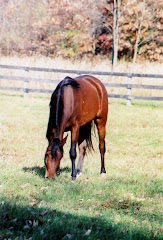
One day in 1950, a tiny secretary from Reno, NV named Velma B. Johnston was driving on a highway and noticed a truck in front of her with blood dripping from the back. She followed the truck and discovered that it was carrying injured, but live, wild horses to a slaughter house.
Repulsed and distressed, Johnston
Annie and her supporters continued the fight—and newspapers continued to publish articles about the exploitation of wild horses and burros. In January 1959, Nevada Congressman Walter Baring introduced a bill prohibiting the use of motorized vehicles (helicopters and trucks which were used to chase down the terrified mustangs) to hunt wild horses and burros on all public lands. The House of Representatives unanimously passed the bill which became known as the Wild Horse Annie Act. The bill became Public Law 86-234 on Sept. 8, 1959.
This law did not include Annie's recommendation that Congress begin a program to protect wild horses and burros. Public interest and concern continued to increase, and with it came the realization that federal management was needed. In response to public outcry, the Senate unanimously passed a law on June 19, 1971. It became known as The Wild Free-Roaming Horse and Burro Act of 1971.
The federal statute calls wild horses "living symbols of the historic and pioneer spirit of the West" that should be "protected from capture, branding, harassment, or death." But the same law also requires the government to achieve "appropriate management levels" of roaming horses so they don't overwhelm federal lands -- and that's the part that has been vexing for bureau officials.
Unfortunately, something has gone terribly wrong and there are over 30,000 wild mustangs who have been incarcerated in holding pens, standing rump to rump, without shade, in Nevada, for over three years now! There are people who want to help, who are willing to help and have the financial resources to help.
For more information, click here: Mustangs On The Hill
+of+DallasGrazing.jpg)



No comments:
Post a Comment